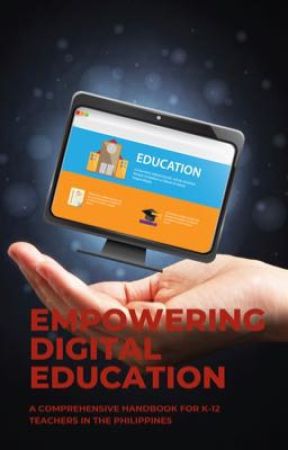I. Introduction
A. Overview of the Handbook: This section will provide a brief outline of the handbook's content and its purpose.
B. Pedagogical Approach and Philosophies: A discussion on educational theories and philosophies that underpin effective teaching.
C. Navigating the Cultural and Technological Context: A guide on how to navigate cultural nuances and technological advancements in the Philippines' educational context.
II. Understanding the K12 Curriculum: DepEd Philippines
A. Overview of the K12 Curriculum: This section will outline the basic structure and components of the K12 Curriculum as defined by DepEd.
B. Curriculum Breakdown per Level: An in-depth look at the specific learning objectives and outcomes expected at each grade level.
C. Adapting Curriculum for Distance and Online Learning: Guidelines and suggestions for adapting the standard curriculum to an online/distance learning format.
III. Teaching Techniques
A. Pedagogical Strategies for Different Age Groups: A comprehensive guide on different teaching strategies suitable for various age groups.
B. Differentiating Instruction to Cater to All Learners: Techniques and methods for adapting teaching to meet diverse learning needs.
C. Culturally Responsive Teaching in the Philippines: Guidelines on how to respect and respond to cultural differences in the classroom.
IV. Distance Learning and Online Education
A. Overview of Distance Learning and Online Education: Introduction to the concepts and benefits of distance learning and online education.
B. Online Platforms for Distance Learning (with a focus on Zoom): A guide on how to use Zoom and other online platforms for effective teaching.
C. Best Practices for Effective Online Teaching: Strategies for maintaining student engagement, managing virtual classrooms, and creating effective online learning environments.
V. Face-to-Face Learning
A. Classroom Management in the Philippine Context: Techniques for managing behavior, time, and resources in a physical classroom setting.
B. Cultivating an Effective Learning Environment: Strategies for creating a safe, supportive, and inclusive learning environment.
C. Facilitating Collaborative Learning and Group Work: Approaches to encouraging teamwork and collaboration among students.
VI. Assessment and Grading
A. Understanding the Grading System: An explanation of the DepEd grading system and how to apply it effectively.
B. Formative and Summative Assessments: Techniques for evaluating student progress, both ongoing (formative) and at the end of a learning period (summative).
C. Online Assessments and Exams: Guidelines for conducting assessments and exams in an online/distance learning context.
VII. Supporting Student Well-being
A. The Role of Teachers in Supporting Student Well-being: Discusses the importance of student mental and emotional health, and the teacher's role in supporting it.
B. Identifying Signs of Stress or Distress in Students: A guide for recognizing signs of mental and emotional distress in students.
C. Promoting a Positive and Inclusive Classroom Culture: Strategies for fostering a positive classroom culture that supports student well-being.
VIII. Communication and Collaboration with Parents and Guardians
A. Effective Communication Strategies: Techniques for communicating effectively with parents and guardians.
B. Parent-Teacher Meetings in an Online Context: Guidelines for conducting productive parent-teacher meetings in an online setting.
C. Engaging Parents and Guardians in the Learning Process: Strategies for involving parents and guardians in their children's education.
IX. Professional Development and Continuing Education for Teachers
A. Opportunities for Professional Development in the Philippines: An overview of opportunities for continuing education and professional development for teachers.
B. Incorporating Research and Continuing Education into Practice: How to apply the latest educational

YOU ARE READING
Empowering Digital Education
Literatura FaktuThis comprehensive handbook offers a practical guide for K-12 teachers in the Philippines navigating the transition between face-to-face and online/distance learning. It delves into the specifics of the DepEd K12 curriculum, emphasizing successful p...
